Practise identifying and using antonyms with a set of worksheets for students in Year 3 and Year 4.
Boost Vocabulary by Learning Antonyms!
Learning about opposites begins in the early years, and for a good reason! Believe it or not, the simple antonym is a key to unlocking the mysteries of reading and writing. Here are just a few ways that learning antonyms boosts your students’ vocabularies:
- By learning antonyms, children can better understand the meaning of words as they provide a contrasting reference point.
- When learning new words, pairing them with their antonyms can help retention.
- Knowing antonyms can help children with their language skills, as it can increase their ability to express themselves with more precision and clarity.
- Children can more effectively convey their thoughts and ideas with a more comprehensive range of words.
Antonyms Worksheets for Year 3 and 4
The set of worksheets has been designed for middle primary students so they may practise identifying and using antonyms in context. It includes the following activities:
- What’s the Antonym – Students read the sentence and write an antonym for the underlined word.
- Change the Antonym – Students read the sentence, complete the blank with a word from the word bank, then write an antonym for that word.
- Antonyms Word Match – Students use the antonyms provided to write sentences.
- Antonyms Exit Tickets – A quick and easy why to establish whether your students have understood the concept of antonyms.
Download and Print Your Opposite Words Worksheets
You’re just a click away from getting your new resources! Use the dropdown arrow on the Download button to select the editable Google Slides resource file or the quick-print PDF version.
This resource was created by Samantha Rose, a Teach Starter collaborator.
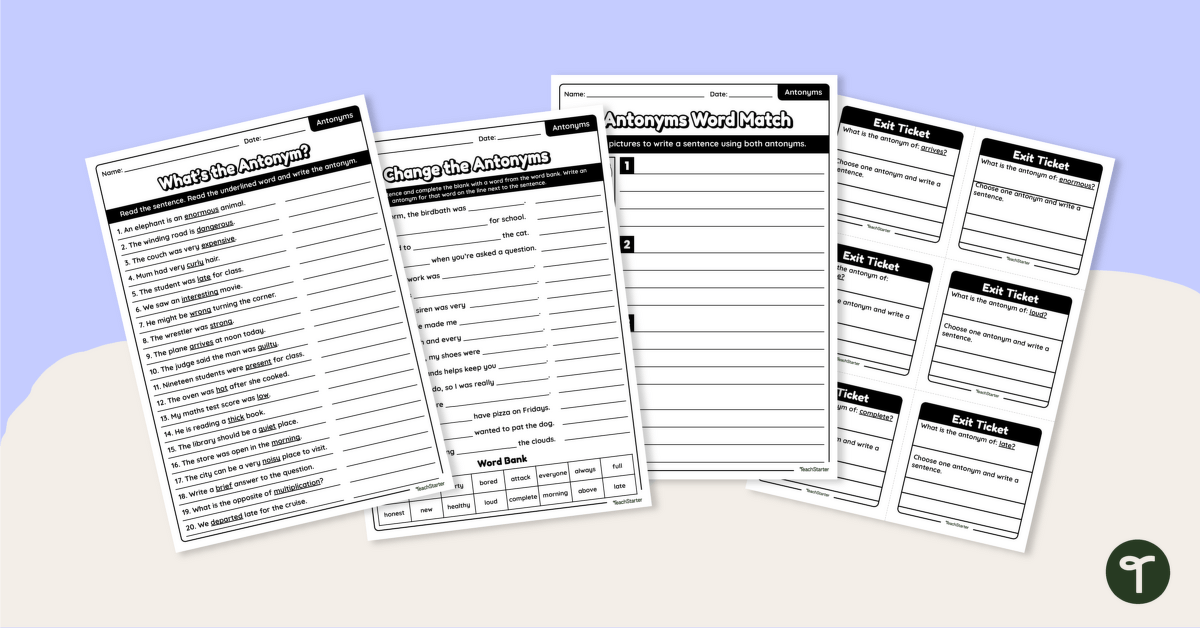


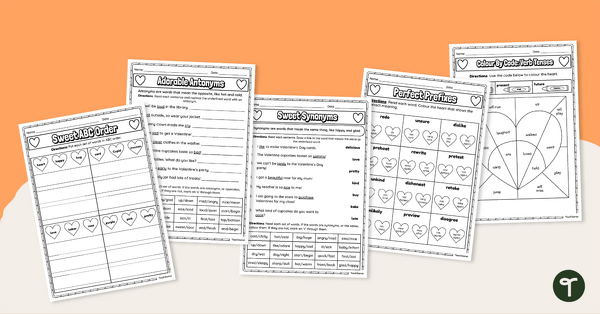
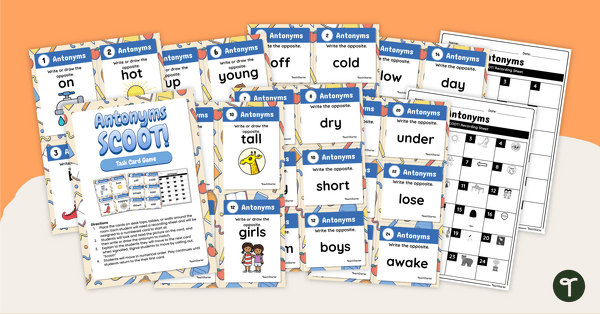
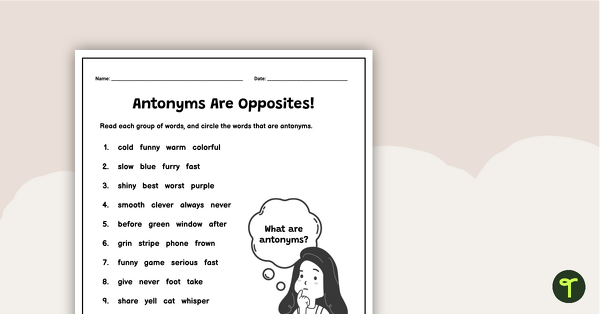
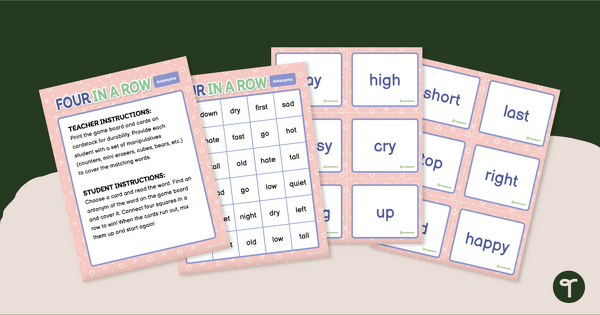
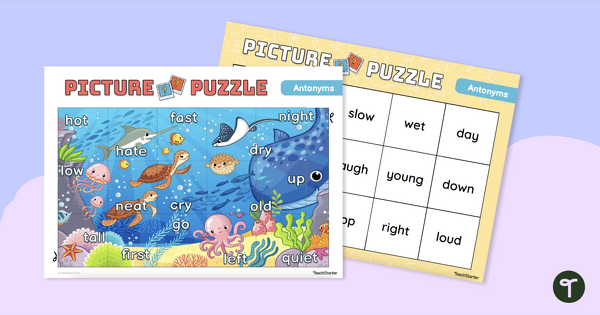
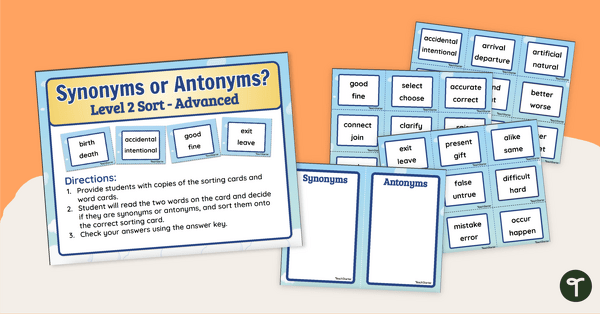
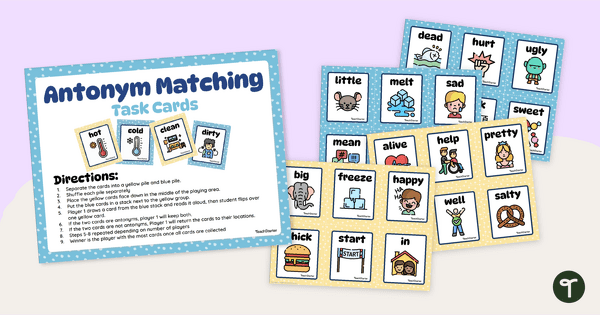

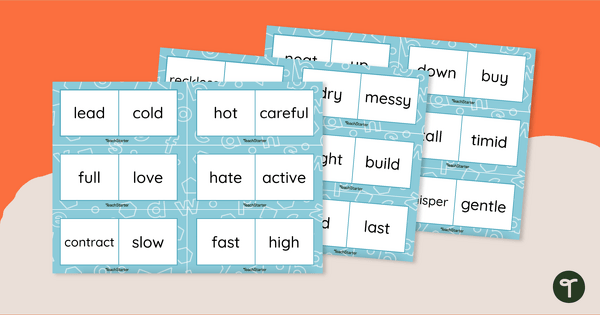
0 Comments
Write a review to help other teachers and parents like yourself. If you'd like to request a change to this resource, or report an error, select the corresponding tab above.